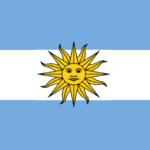Interesting facts about food in different countries
 There are almost two hundred countries in the world, and the national cuisine in each of them is unique in its own way. And residents of different regions sometimes mistrust at what their neighbors are cooking, although often the same kitchen is not worse than the other. And it’s good, probably, to be a traveling gourmet – you can try all kinds of yummy in different parts of the Earth.
There are almost two hundred countries in the world, and the national cuisine in each of them is unique in its own way. And residents of different regions sometimes mistrust at what their neighbors are cooking, although often the same kitchen is not worse than the other. And it’s good, probably, to be a traveling gourmet – you can try all kinds of yummy in different parts of the Earth.
Since the inhabitants of Japan since the ancient times ate a lot of seafood, in their digestive system there were special microorganisms that allow more efficient splitting of such food.
Initially, Europeans used to eat the tops, not the fruit of carrots. In Portugal, jams from carrot leaves are still being cooked.
In the Scandinavian countries, there are several traditional dishes from spoiled fish – in Iceland they cook hakarl from rotten shark meat, and in Sweden, surrealism from sour herring is very popular.
In Chile, it is not accepted to eat with your hands – no matter what lies on the plate, a well-bred person should use cutlery.
Popular noodles in China can not be cut into pieces, as it symbolizes longevity and health.
In Japan, it is customary to chuckle loudly while eating, especially when eating soups and noodles. So the Japanese show the cook how much they liked the treat.
In Kazakhstan, guests are never poured a full cup of tea, as courting for them is considered a pleasant and honorable duty. If the Kazakh still filled the cup to the brim, it means that the visitor is not welcome in the house.
In France it is customary to put bread on the table, and not on the edge of the plate. In addition, eating a bun or toast to the main course is considered bad form.
The head of the Catholic church announced a large South American rodent capybaru fish, so that the meat of these animals could be eaten in fasting. Dishes from these relatives of guinea pigs are still present in the kitchen of many countries of the world.
The biggest dish in the world is a roasted camel, which has been cooked in Morocco since ancient times. The carcass of the animal is stuffed with a whole sheep, 20 chicken, 60 eggs and other ingredients.
French camembert cheese becomes especially tasty before the expiry date of its validity.
In China and Japan, desserts from the petals of chrysanthemum are extremely popular.
Decorate dishes with a twig of parsley the first began the ancient Romans – they believed that this plant is able to neutralize the poison, if the food was poisoned by enemies.
Every day, about 27 million Americans eat in the establishments of the McDonald’s network.
In the Philippines, a coconut, chipped without chipping, is considered a good sign.
Until the middle of the 19th century, all the dishes ordered at the restaurant were brought to the guest in French restaurants at once. Then Paris was visited by the Russian prince and told about the alternative feeding, when the food is brought gradually, in the order that appears on the menu. This method of filing began to be used everywhere and still calls it service a la russe.
Legislators of the European Union officially recognized fruits as cucumbers, tomatoes, pumpkin, rhubarb, carrots and ginger.
In Japan, it’s a good idea to eat sushi with your hands – so the restaurant guest shows respect to the cook.
The “Napoleon” cake was first cooked by Moscow confectioners in honor of the centenary of the expulsion of the French emperor from Russia. Initially, the dessert was triangular in a reminder of the Frenchman’s headdress.
In ancient Russia, borshch called a decoction of the cow-beetroot on beet kvass.



























